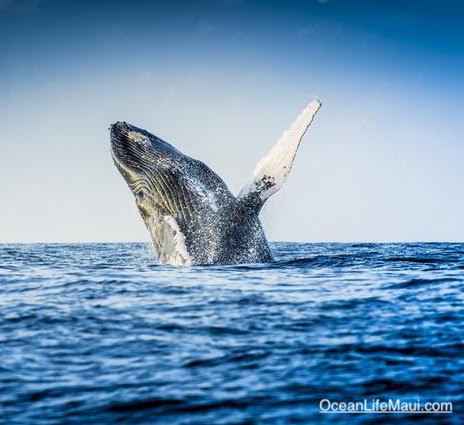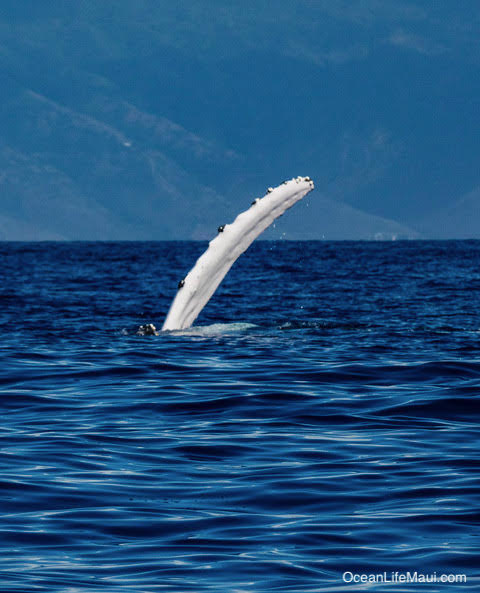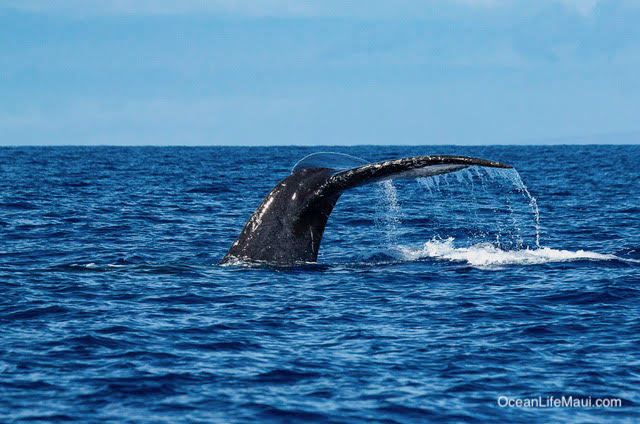Have you ever been mugged by a whale on Maui? The Auau channel off the coast of Maui offers you the greatest chance for a mugging by a North Pacific Humpback Whale (kohola). Yes! Whale season is here and the Auau channel hosts the greatest population of Humpbacks for the winter season. The shallow channel is 252 feet in depth and is located west of Maui and east of Lanai, with Molokai to the north. This naturally protected sanctuary offers a magnificent playground for the Humpbacks and their new born calves.

Whale Season Officially Starts December 15th
No need to mark your calendar, we already had our first sighting in September. I typically cast my attention to the water in November, for my first whale sighting. The whales are a reminder for the gratitude I have, living here on Maui. It’s that first sighting that makes me think of how far they’ve had to travel, 3,000 miles all the way from Alaska. Once they arrive here, their food source is quite limited. Hawaiian waters are less abundant with zooplankton.
Why Do They Come Here
Why would a mother travel 6-8 weeks and 3,000 miles to give birth? Baby whales are born with minimal fat so our warm tropical water offers comfort and sanctuary from larger predators. A calf weighs one ton and is 10-12 feet long at birth. The calf will consume 130 gallons (500 liters) of milk a day.
Whales giving birth is not the only reason for them to migrate here. When the larger female is in heat, she calls to potential males by slapping the water for attention. Once she has piqued the interest of a potential mate, she swims away (can sprint up to 20mph) as her suitors battle for pole position directly behind her. This chase is quite the battle between competing males and creates an amazing show.
Tail Throws And Pectoral Slaps
These two behaviors are performed when a female is attracting the attention of a male.


The Whale And Human Connection
The special correlation between whales and humans who travel to hawaii is quite fascinating; each coming here for the tropical water and natural beauty of the islands. We have people who migrate here and never leave. We have those who spend the entire winter just as the whales. And we have those who come for a week, seeking the warmth of our tropical paradise. The whales offer guidance and symbolism of life’s flow throughout the islands.
This amazing place we call home is a sanctuary that is deeply respected and honored. The whales come here to live without expectation. They inhabit the waters to share life, joy, and aloha with us. We are so blessed to witness so much beauty by these mammals who come here to give. They give birth. They give peace. They give entertainment. And most importantly they exude and exemplify Aloha.
Island Gratitude
As we embark upon this winter season and our islands fill to capacity, please take a moment to find gratitude in the place we call home. If you’re a tourist traveling here, I ask that you close your eyes upon arrival. Take a minute to allow the Mana of Hawaii to infiltrate your soul. The beauty of the islands goes deeper than what you see. Aloha is not just a word. Aloha is the infinite energy and breath of the islands. Allowing yourself to move at a slower pace is a virtue and one that makes life here so treasured.
Spyhop – Look for a whale with his head straight up out of the water surveying his surroundings and his body going vertically below him.
Mugging – Vessels are required to stay 100 yards from a whale but if the curious whale swims to the boat, you’ve been mugged.
May the whales come to you, so that you can say, “I got mugged on Maui.”
Aloha,
Blake
Connect with me today and share your whale watching experience. ![]()


Leave your opinion here. Please be nice. Your Email address will be kept private, this form is secure and we never spam you.